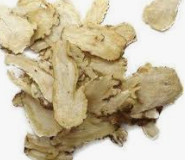Study on Optimization of microwave drying and sterilization process of Angelica sinensis
ABSTRACT: Objective: To study the optimum technological conditions of Angelica sinensis microwave drying equipment. Methods: Single factor test and L9 (34) orthogonal test were used to screen the factors. The total number of colonies, ferulic acid content and final water content of Angelica sinensis were evaluated comprehensively.

RESULTS: The optimum microwave drying and sterilization parameters of Angelica sinensis were water content 15%, microwave power 12 kw, microwave speed 1030 r.s-1 and sample loading 10 kg.m-2. CONCLUSION: By optimizing the microwave drying sterilization process of Angelica sinensis, the loss of ferulic acid, the effective ingredient of Angelica sinensis, can be reduced, and the purpose of effective sterilization can be achieved. It can be used to improve the quality of products and provide scientific basis for the processing and production of Angelica sinensis in Gansu and the whole country.
Key words: microwave drying Angelica sinensis; process optimization

Angelica sinensis is the dry root of the Umbelliferae plant Angelica sinensis, which is mainly produced in Minxian, Sichuan and Yunnan. Angelica sinensis has high medicinal value and has been highly valued by scholars at home and abroad. Angelica sinensis is one of the most commonly used important Chinese medicines in clinic, especially in gynecological medicine, it has the reputation of "ten prescriptions and nine returns". It has the functions of nourishing blood and blood, regulating menstruation, relieving pain, moistening intestines and relaxing bowels.
The effective components of Angelica sinensis are mainly volatile oils and organic acids, while the organic acids are mainly ferulic acid. Studies have shown that ferulic acid has many pharmacological effects, such as lowering blood lipid, anti-thrombosis, anti-oxidation, anti-bacterial, anti-cancer and so on. Therefore, the quality standard of Angelica sinensis is usually controlled by determining the content of ferulic acid in Angelica sinensis.
Drying is one of the important factors affecting the quality and clinical function of traditional Chinese medicine. Microwave is a kind of electromagnetic wave with high penetrating force and frequency ranging from 300 to 300 000 MHz. As early as the 1960s, microwave was used as an energy source in heating, drying, sterilization and medical treatment. Compared with the traditional drying method, the material itself is the heating body in microwave drying, and the direction of heat conduction is consistent with the direction of moisture diffusion, which has the advantages of fast drying speed, uniform heating and high drying efficiency.
Therefore, microwave drying technology has been widely used in food industry, wood, ceramics industry, agricultural products and traditional Chinese medicine rapid drying. The heat source provided by microwave can directly heat the material, so that the material can be dried quickly, and good drying effect has been achieved. For example, He Chunnian et al. studied the effects of various drying technologies (including natural air drying, indoor shade drying, oven blast drying, vacuum drying and microwave drying) on the total flavonoids content in the leaves of Scutellaria baicalensis. It was found that microwave drying had the least effect on the total flavonoids content in the leaves of Scutellaria baicalensis.
In addition, the study also found that microwave drying has the function of sterilization and disinfection, which can prevent mildew and insects in the storage of medicinal materials, and make the medicinal materials meet the hygienic standards. However, microwave drying is a very complex process in the production of Chinese medicinal materials. There are many factors affecting microwave drying, such as initial moisture content, microwave power, heating time, material shape, sample loading and heating uniformity. Therefore, the selection of microwave drying process conditions is very important.
Therefore, on the basis of traditional drying technology of Angelica sinensis, this study analyzed the effects of water content, microwave power, microwave speed and sample loading on ferulic acid content, total colonies and final water content of Angelica sinensis by single factor and orthogonal test, and obtained the best combination of microwave drying and sterilization technology of Angelica sinensis, in order to provide basis for the processing and production of Angelica sinensis in China.